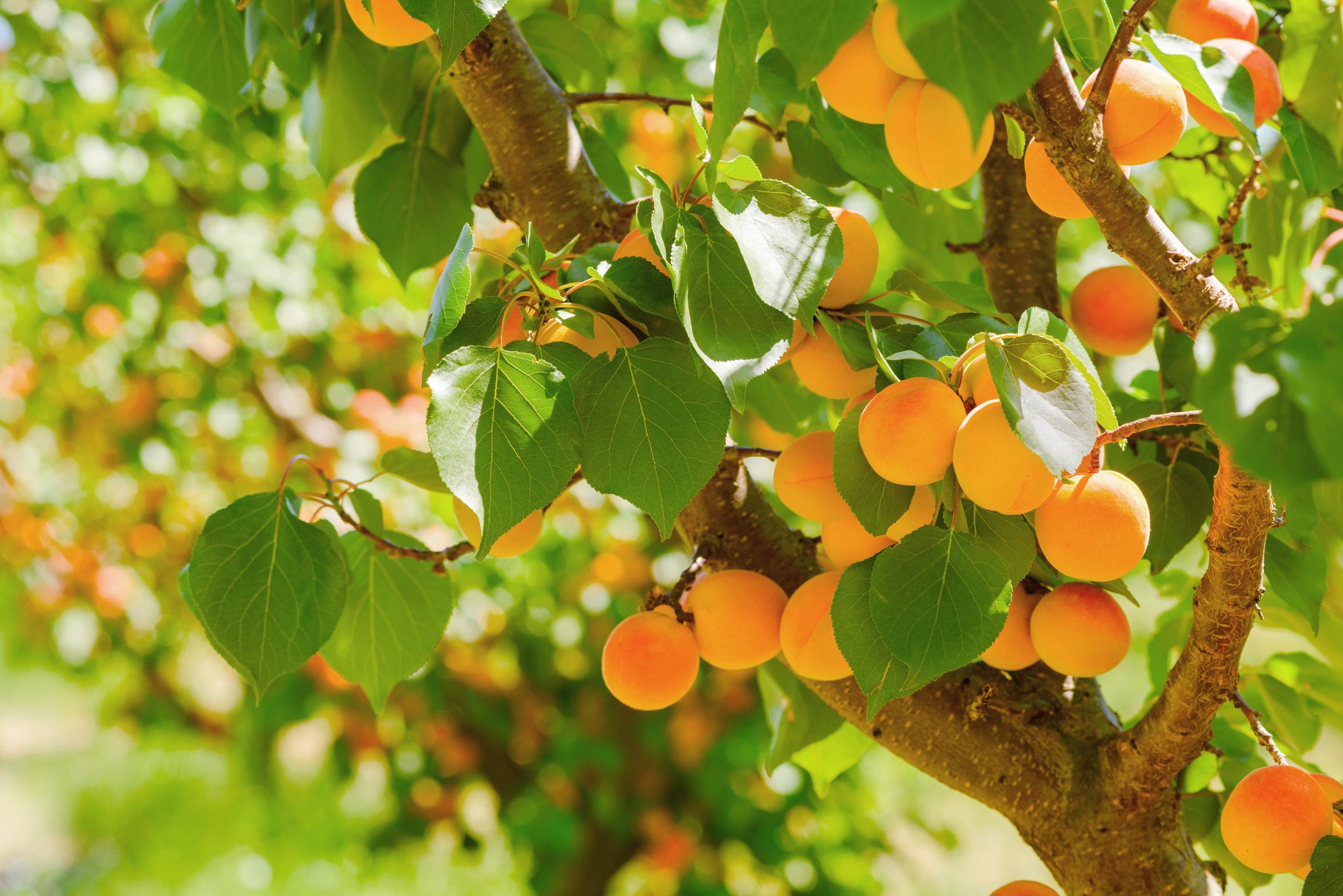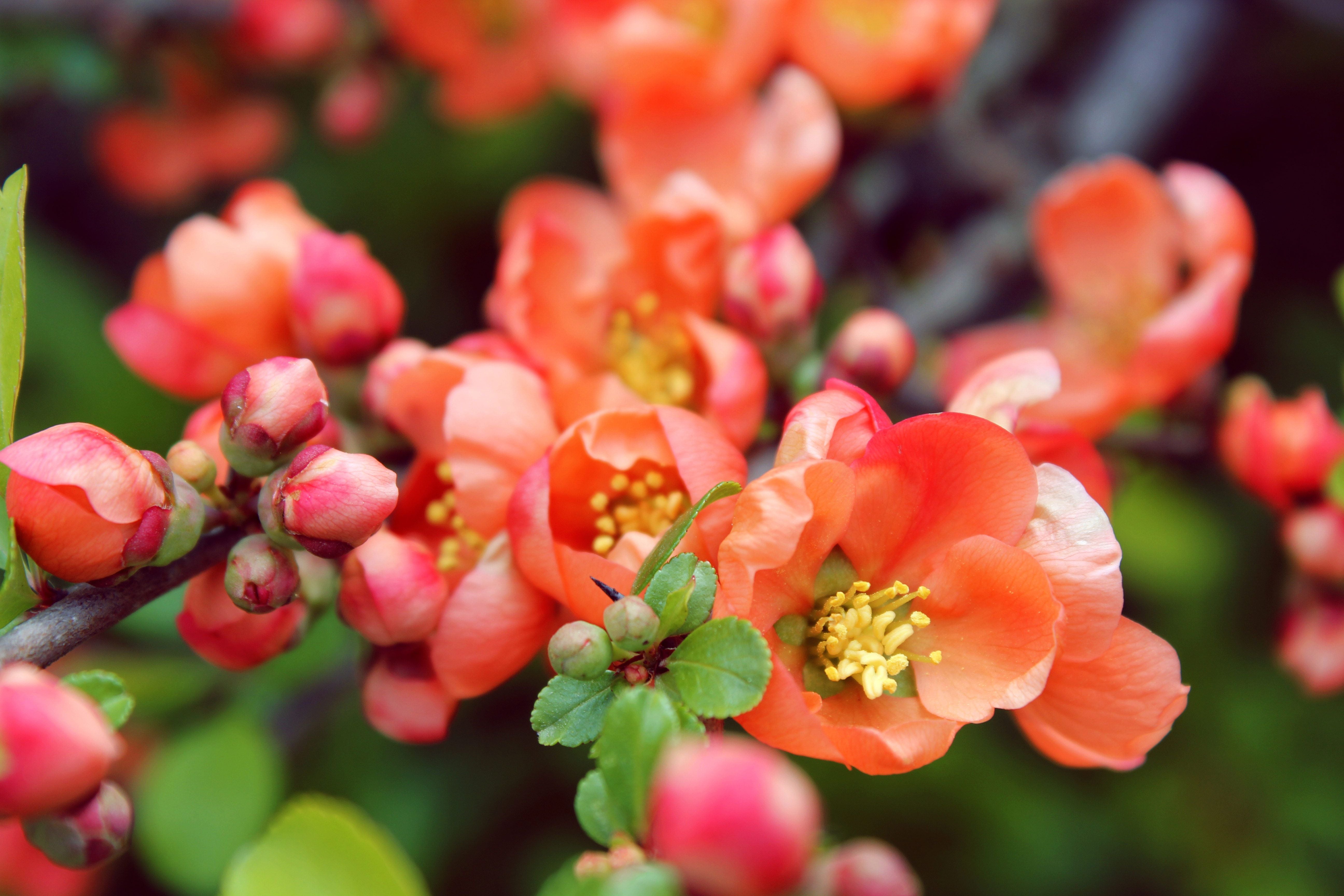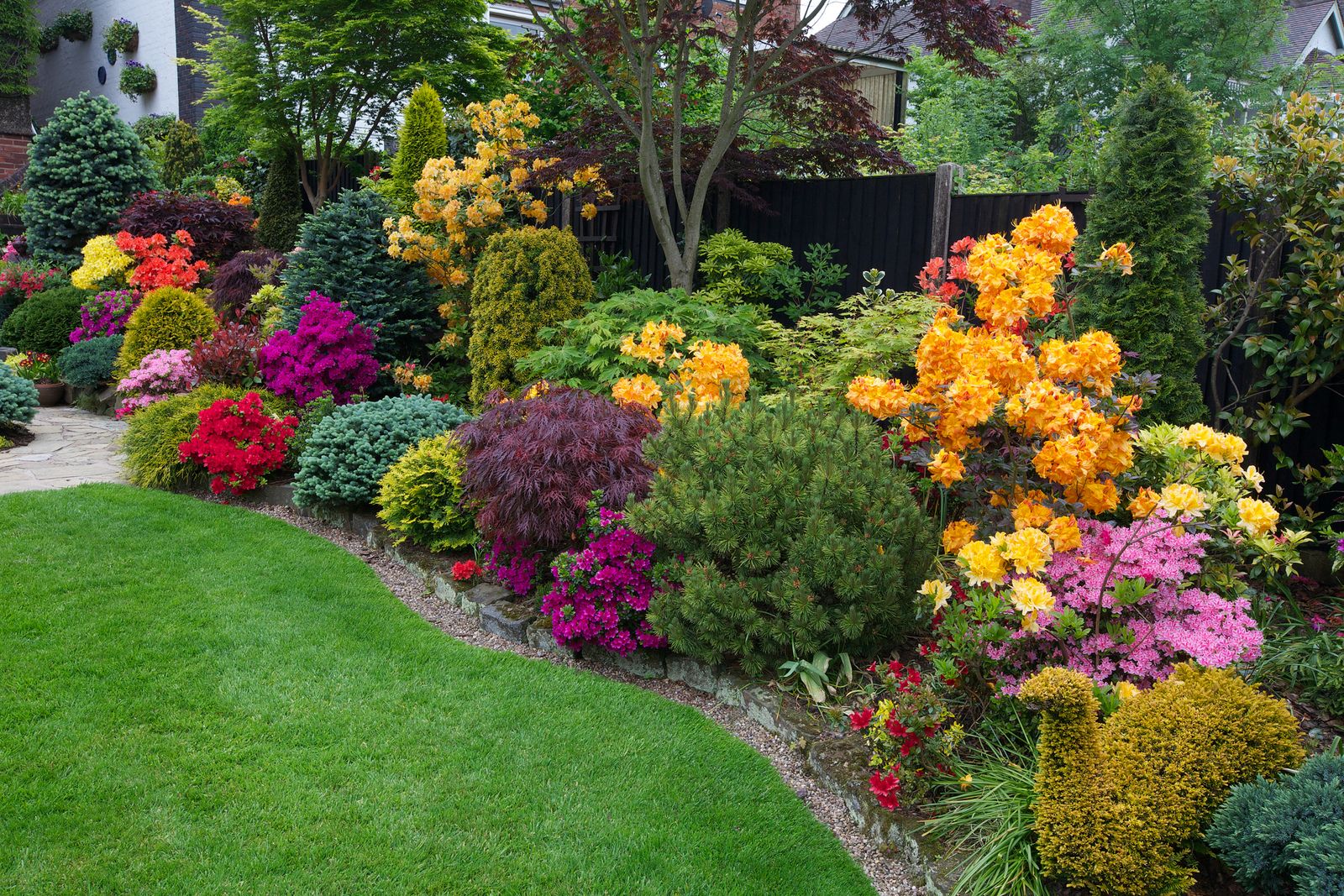Welcome to your Seed Potato Planting and Care Guide! This guide covers essential steps for planting, storing, and caring for your seed potatoes. Be sure to remove the potatoes from their packaging immediately upon arrival and inspect them to ensure they’re in good condition. Whether you’re ready to plant or need to store them temporarily, these instructions will help you grow a successful, productive crop.
Planting
In-Ground or Large Containers (10 Gallons or Larger)
Preparing Seed Potatoes: If your seed potatoes are about the size of an egg or larger, cut them into pieces weighing around 1.5-2 ounces. Each piece should have at least one "eye" (a sprouting bud). Allow these pieces to sit for a day or two to form a protective layer over the cut surface, reducing the risk of rotting once planted. Soil Preparation: Potatoes grow best in loose, well-draining soil that’s rich in organic matter. Mixing in compost or aged manure will help provide the nutrients they need.
In-Ground or Raised Bed Planting
Planting Depth: Plant the potato pieces about 4 inches deep if you have heavy soil, and up to 6 inches deep in lighter, sandy soil. Spacing: Place the pieces 12 inches apart in rows, with 30-36 inches between rows to allow enough space for growth.
Dig a trench or holes at the appropriate depth.
Place each piece in the trench with the cut side down and "eyes" facing upward.
Cover with soil and water well to help the soil settle.
Large Container Planting (10 Gallons or Larger)
Container Size: Choose containers with a minimum capacity of 10 gallons and ensure they have drainage holes. Planting Depth: Begin with a 4-inch layer of soil at the bottom of the container.
Place 3-4 potato pieces on top of the soil, spacing them out.
Cover with about 4 inches of soil and water thoroughly.
As the plants grow, continue adding soil to cover all but the top few inches of the plant until the container is full.
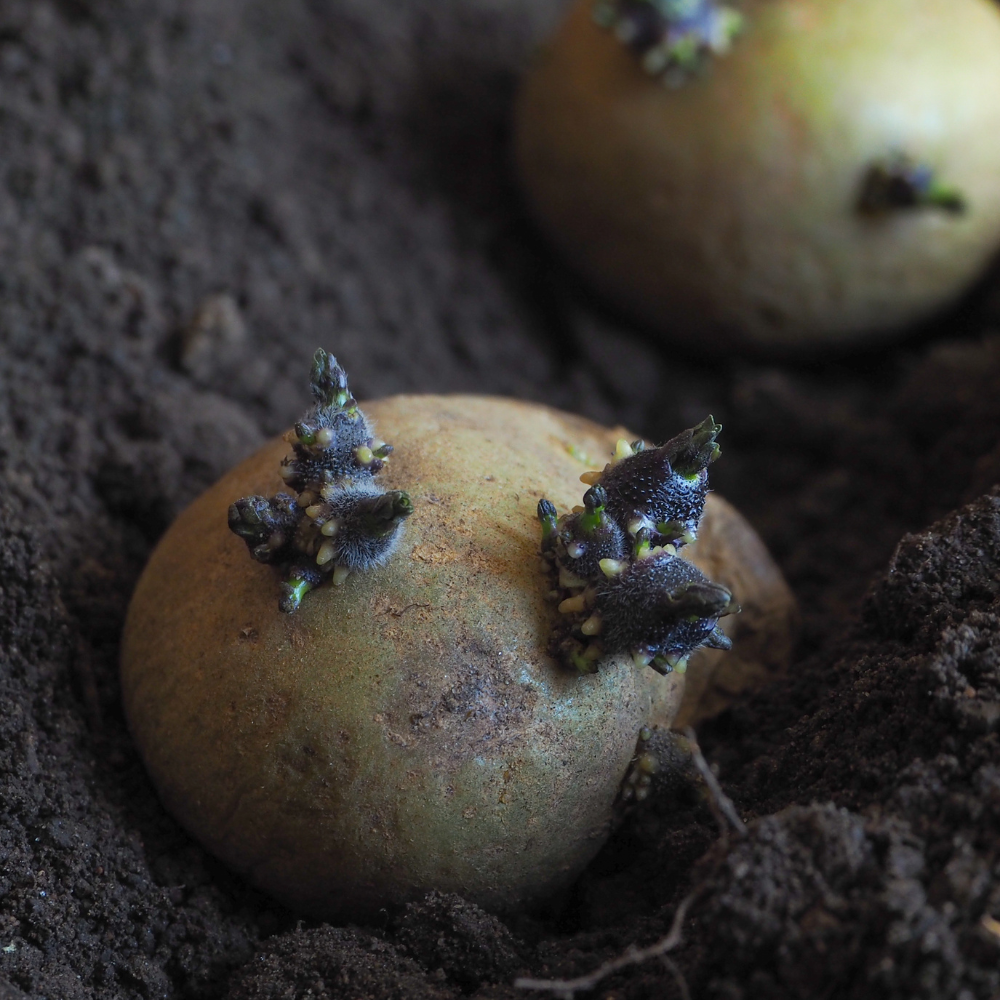
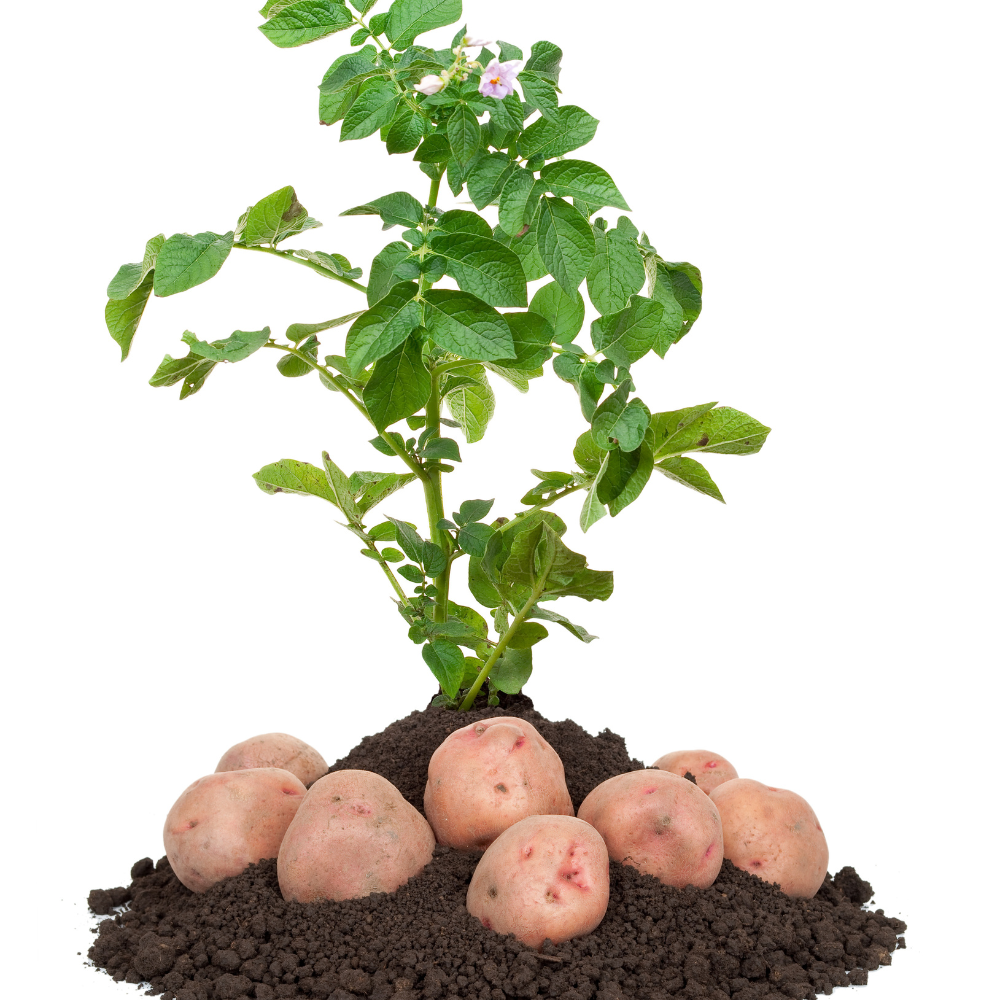
Temporary Storage Tips
Cool, Dark Storage: Store seed potatoes in a cool, dark place between 40-50°F, such as a basement or garage. Avoid exposure to light to prevent early sprouting.
Avoid Refrigeration: Avoid placing seed potatoes in the refrigerator, as temperatures below 40°F can alter their ability to sprout effectively.
Air Circulation: Store potatoes in a breathable container, like a paper or mesh bag, to prevent moisture buildup and rot. Check periodically to ensure they remain firm and dry.
Basic Care & harvesting
- Sunlight: Potatoes need full sun, with at least 6 hours of direct sunlight each day for optimal growth.
- Watering: Maintain consistent soil moisture, especially during the tuber formation stage. Watering evenly is key; avoid soggy soil to prevent root rot.
- Hilling: Once plants reach about 6-8 inches tall, mound soil around the base of each plant to cover any developing tubers. Repeat every few weeks as plants grow to protect tubers from light exposure.
- Fertilizing: Use a balanced fertilizer when planting, then apply again mid-season to support tuber development. Avoid high-nitrogen fertilizers, as they can lead to excessive foliage growth rather than tuber production.
Harvesting Tips
- Early Harvest (New Potatoes): For tender, smaller potatoes, harvest when plants begin to flower, typically 60-70 days after planting. Carefully dig around the plant to remove a few tubers.
- Main Harvest: For mature potatoes, wait until the plant foliage dies back. Use a garden fork or shovel to gently dig up the tubers, being careful not to damage them. Cure harvested potatoes in a cool, dark space for 1-2 weeks before storing, which helps toughen the skins for longer storage.




